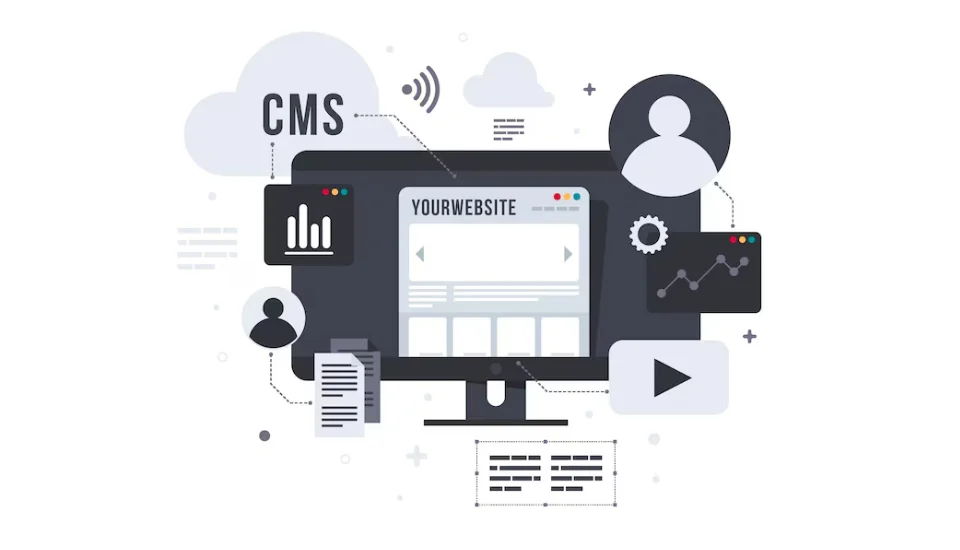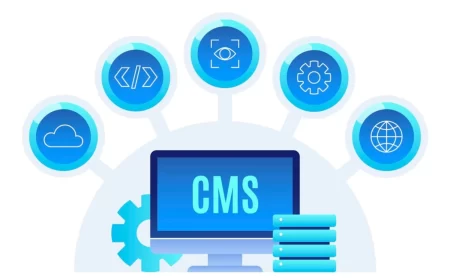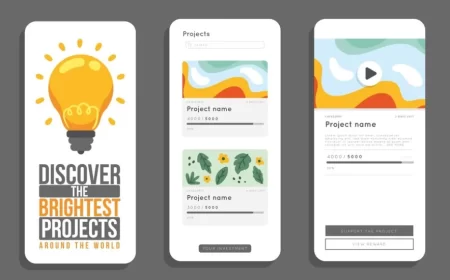In the modern digital ecosystem, the demand for delivering content across diverse platforms – from websites and mobile apps to IoT devices and smart displays – has made Headless CMS Platforms an indispensable tool. These innovative systems decouple the content management backend from the frontend presentation layer, offering unparalleled flexibility, scalability, and developer freedom.
This comprehensive guide provides an in-depth look at the leading headless CMS platforms available today. We’ll briefly revisit the core concept of a headless CMS and its benefits, then present an extensive directory of platforms, each with a brief description and its official website link. This resource aims to help you navigate the rich landscape of headless solutions and find the perfect fit for your specific project needs.
Understanding the Headless CMS Advantage
A Headless CMS is essentially a content repository that focuses solely on the creation, storage, and delivery of raw, structured content via APIs (Application Programming Interfaces), typically REST or GraphQL. It has no built-in frontend or presentation layer (“head”).
Key Benefits of a Headless CMS:
- Frontend Freedom: Developers can use any frontend technology (React, Vue, Next.js, Gatsby, native mobile, etc.).
- Omnichannel Delivery: Content can be published “create once, publish anywhere” across websites, mobile apps, IoT, and more.
- Performance & Scalability: Decoupled architecture allows for optimized, blazing-fast frontends and independent scaling of content and presentation layers.
- Enhanced Security: Reduced attack surface as the content backend is not directly exposed to the public internet.
- Future-Proofing: Easily adapt to new technologies and devices without overhauling the entire content infrastructure.
- Streamlined Workflows: Content creators focus on content, while developers focus on presentation, leading to parallel workflows.
- Easier Integrations: API-first nature simplifies connecting with other third-party services.
Comprehensive Directory of Headless CMS Platforms
Here is an extensive list of popular and emerging Headless CMS platforms, along with their official websites:
I. SaaS (Software as a Service) Headless CMS
These platforms are cloud-hosted and managed by the vendor, offering convenience and scalability.
- Contentful
- Description: A leading API-first headless CMS designed for scalability and flexibility, popular for enterprise-level projects. Offers extensive documentation, SDKs, and strong localization.
- Website: https://www.contentful.com/
- Sanity
- Description: A modern headless CMS known for its real-time collaboration capabilities and highly flexible content management. Features the customizable, open-source Sanity Studio editing environment.
- Website: https://www.sanity.io/
- Prismic
- Description: A user-friendly headless CMS known for its “Slices” system for modular content management, allowing content creators visual flexibility. Strong integration with modern frontend frameworks.
- Website: https://prismic.io/
- DatoCMS
- Description: A fast and developer-friendly headless CMS with a powerful GraphQL API and flexible content modeling capabilities, supporting projects from small websites to enterprise applications.
- Website: https://www.datocms.com/
- Hygraph (formerly GraphCMS)
- Description: A GraphQL-native headless CMS known for its strong GraphQL API and content federation capabilities, allowing data stitching from multiple sources. Ideal for highly structured and media-rich content.
- Website: https://hygraph.com/
- Storyblok
- Description: Offers a unique visual editor (Visual Composer) that provides a live preview of content as it’s built, combining developer flexibility with a marketer-friendly UI.
- Website: https://www.storyblok.com/
- Contentstack
- Description: An enterprise-grade headless CMS focused on composable digital experiences, offering robust governance, automation, and scalability features for large organizations.
- Website: https://www.contentstack.com/
- Kontent.ai
- Description: A highly flexible and user-friendly headless CMS designed for enterprise publishers, emphasizing efficient content creation and management across multiple channels.
- Website: https://kontent.ai/
- ButterCMS
- Description: A lightweight, SaaS-based headless CMS emphasizing ease of use and quick setup, with pre-built SDKs and integrations. Ideal for smaller teams or rapid project launches.
- Website: https://buttercms.com/
- Agility CMS
- Description: Claims to be a fast and flexible multi-tenant SaaS headless CMS that is easy for developers to customize and offers an accessible user interface for marketers.
- Website: https://agilitycms.com/
- Magnolia
- Description: A hybrid CMS offering both headless delivery and traditional in-context editing, aimed at large companies with complex digital operations and personalization needs.
- Website: https://www.magnolia-cms.com/
- Bloomreach
- Description: An e-commerce-focused platform offering a headless commerce solution, allowing marketers to optimize and personalize commerce and content experiences with broad headless APIs.
- Website: https://www.bloomreach.com/
- Quintype
- Description: A cloud-based headless CMS platform tailored for enterprise publishers, offering features for managing and delivering large volumes of content efficiently.
- Website: https://www.quintype.com/
- Umbraco Heartcore
- Description: A headless CMS built on the .NET framework, offering a familiar editor experience for Umbraco users combined with managed RESTful and GraphQL APIs and CDN.
- Website: https://umbraco.com/products/umbraco-heartcore/
- Builder.io
- Description: A visual headless CMS that integrates with existing sites and tech stacks, allowing users to drag and drop components to create and optimize pages visually.
- Website: https://www.builder.io/
- Prepr
- Description: A headless CMS with a focus on personalization, A/B testing, and AI-driven content optimization, designed to deliver dynamic and relevant content experiences.
- Website: https://prepr.com/
II. Open-Source Headless CMS
These platforms offer self-hosting options, providing maximum control and customization.
- Strapi
- Description: The leading open-source headless CMS built with Node.js. It’s 100% JavaScript, fully customizable, and developer-first, saving API development time through a beautiful admin panel.
- Website: https://strapi.io/
- Directus
- Description: An open-source, database-agnostic headless CMS that connects directly to your existing SQL database, transforming it into a powerful content API and admin panel.
- Website: https://directus.io/
- Ghost
- Description: An open-source headless CMS tailored for professional publishers, particularly blogs and publications. It combines the flexibility of a headless API with robust content management tools and built-in SEO.
- Website: https://ghost.org/
- Payload CMS
- Description: A modern, developer-first headless CMS built with TypeScript and Node.js. It stands out for its deep customization, generating a powerful admin UI and GraphQL/REST APIs from your code.
- Website: https://payloadcms.com/
- Webiny
- Description: A highly customizable, scalable, serverless headless CMS that you can host on your own AWS account, offering enterprise-grade functionality while keeping your data within your infrastructure.
- Website: https://www.webiny.com/
- KeystoneJS
- Description: A programmable backend that allows you to create a highly customized CMS and GraphQL API in minutes. It’s a powerful tool for building data-driven applications.
- Website: https://keystonejs.com/
- TinaCMS
- Description: A free and open-source headless CMS focused on providing a great developer experience for building websites and applications using Git as the content source. Features live previews and minimal configuration.
- Website: https://tina.io/
- Cockpit CMS
- Description: A free, self-hosted, and API-driven headless CMS that describes itself as a “content provider” rather than a website builder. It’s lightweight and database-agnostic.
- Website: https://getcockpit.com/
- Netlify CMS (now Decap CMS)
- Description: An open-source, Git-based CMS built as a single-page React app. It works with any static site generator and provides an editor-friendly UI for managing content in Git repositories.
- Website: https://decapcms.org/ (Note: Formerly Netlify CMS)
- Wagtail
- Description: The leading open-source Python CMS, based on Django. It supports both traditional and headless sites via REST and GraphQL APIs, offering flexibility for Python developers.
- Website: https://wagtail.org/
- Squidex
- Description: A scalable open-source headless CMS for developers and content authors, offering a powerful API and a user-friendly interface.
- Website: https://squidex.io/
- Flextype
- Description: An open-source, self-hosted, Data-First Headless CMS & API that is lightweight and highly flexible, storing content in flat files.
- Website: https://flextype.org/
- Gentics Mesh
- Description: An open-source API-first headless CMS designed for enterprise-level content management, offering robust features for structured content and digital asset management.
- Website: https://gentics.com/mesh/
- Graphweaver
- Description: An open-source GraphQL-native Headless CMS that uses a TypeScript code-only approach to seamlessly connect to various data sources and combine them into a dynamic real-time GraphQL API.
- Website: https://graphweaver.com/
- ApostropheCMS
- Description: An open-source Node.js CMS that helps businesses launch dynamic websites and client campaigns faster, offering a dynamic in-context editing experience.
- Website: https://apostrophecms.com/
- FireCMS
- Description: An open-source headless CMS built on Firebase/Firestore, offering a powerful and flexible solution for managing content with a focus on real-time data.
- Website: https://firecms.co/
- Kirby CMS
- Description: A file-based content management system that can be used as a headless CMS. It’s flexible, developer-friendly, and gives you full control over your content and data.
- Website: https://getkirby.com/
- Publii
- Description: A desktop-based CMS for Windows, Mac, and Linux that makes creating static websites fast and hassle-free, even for beginners. Can be used to generate static sites from content.
- Website: https://getpublii.com/
- Squidex
- Description: A scalable open-source headless CMS for developers and content authors, offering a powerful API and a user-friendly interface.
- Website: https://squidex.io/
- TinaCMS
- Description: A free and open-source headless CMS focused on providing a great developer experience for building web sites and applications using Git as the content source. Features live previews and minimal configuration.
- Website: https://tina.io/
- WordPress VIP (Headless Option)
- Description: While primarily a traditional CMS, WordPress VIP offers robust headless capabilities, allowing enterprises to leverage WordPress’s content management power with a custom frontend.
- Website: https://wpvip.com/
Conclusion
The landscape of Headless CMS platforms is rich and diverse, offering a solution for nearly every project size, budget, and technical requirement. From fully managed SaaS offerings that prioritize ease of use and scalability to powerful open-source options that provide ultimate control and customization, the choice depends on your specific needs.
By embracing a headless architecture, you’re investing in a future-proof, flexible, and high-performing digital presence. This directory serves as your starting point to explore these innovative platforms and unlock the full potential of your content across all digital channels.












